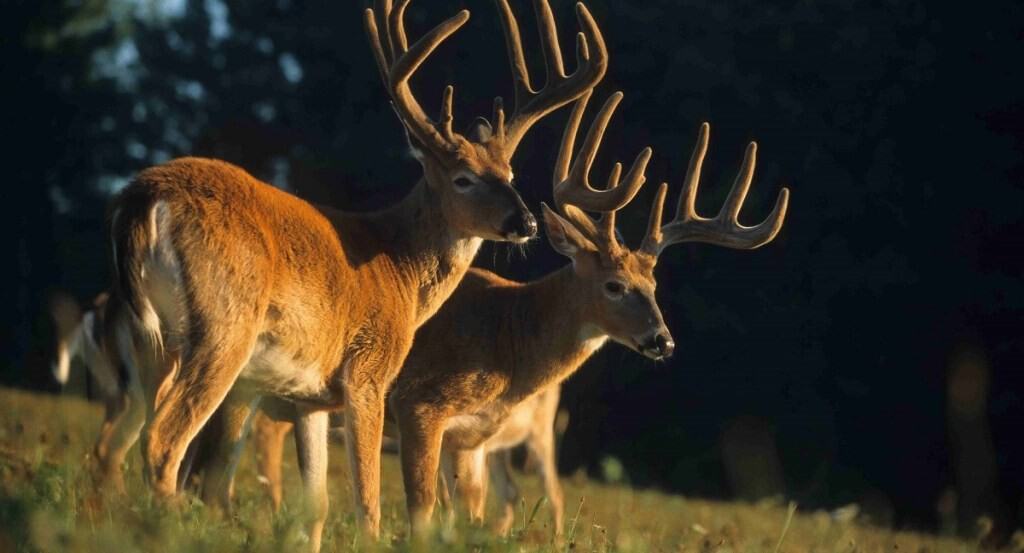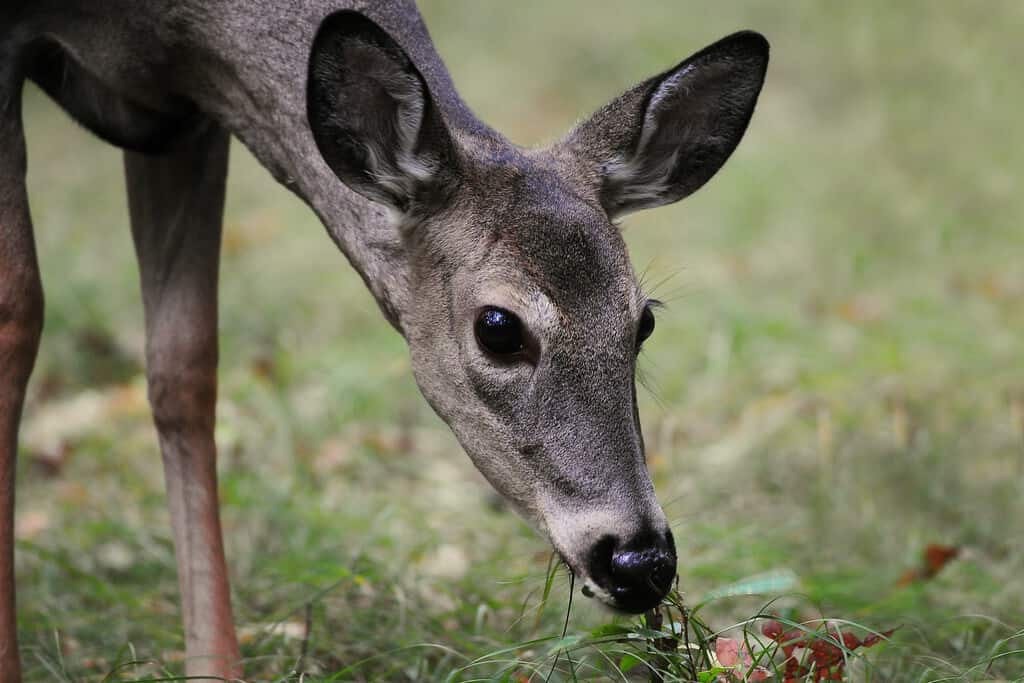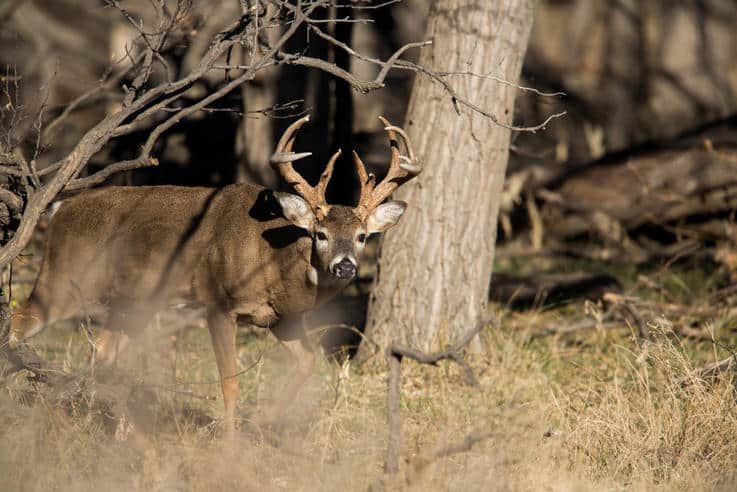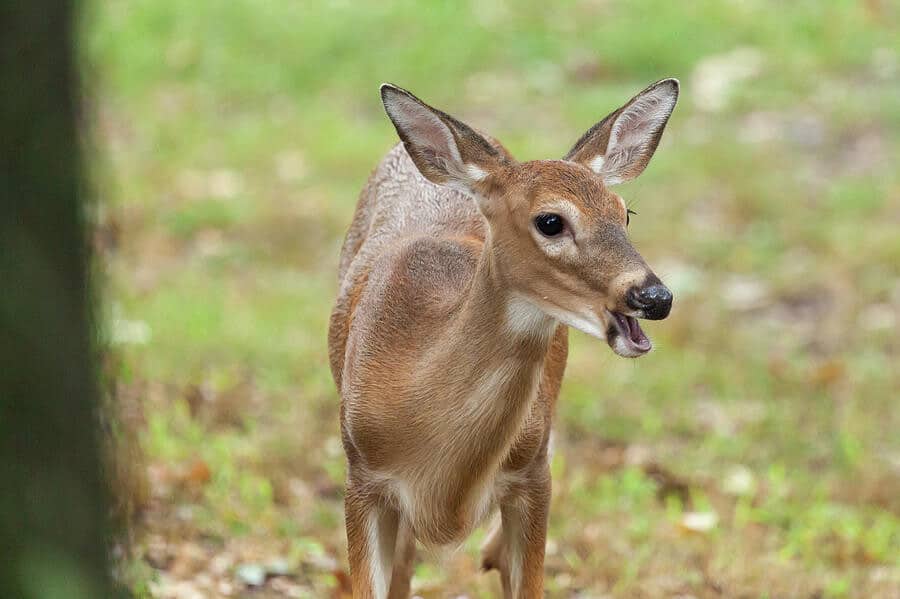The whitetail rut can be an incredibly exciting time for deer hunters who understand the nuances of buck behavior. As the cooler months of autumn begin to set in, new patterns will emerge among whitetail deer populations. With these changes comes the opportunity for hunters to take advantage of bucks that are more focused on finding a doe in heat rather than observing the usual safety precautions they are accustomed to during the rest of the year.
Each particular phase of the rut is different and understanding how deer adapt to these changes and shift their focus more toward mating is key to making the most out of this time of the year. In this article, we’ll discuss each part of the early, middle, and post-rut and what to expect from deer. Let’s take a closer look at the best practices for hunters when it comes to treestand placement during each phase of the rut.
A Quick Summary Table
| Rut Phase | Stand Placement |
| Pre – Rut | Food Sources/ Scrape Lines |
| Full – Rut | Funnels/ High Traffic Areas |
| Post – Rut | Food Sources |
Pre-Season Buck Behavior
Across much of the United States, whitetail bucks will be in what many might consider to be a leisurely state during the last few months of summer. During this time, their antlers will grow at an astounding pace until they reach full maturity toward the end of August. Whitetail deer biologists and researchers have determined that there is no other tissue type in any animal species that grows faster than deer antlers.
Once bucks finally rub the velvet off their antlers, they are ready to start searching for does in estrus. The specific timing of the rut varies widely across part of continental United States with some areas seeing rutting activity kick off in October and other areas heating up as late in the season as February. Regardless of when the rut starts in your neck of the woods, you can guarantee that deer behavior during the rut is more or less the same in any location.

During the summer months, it’s common to see various “bachelor groups” of bucks. These groups consist of bucks of all ages and maturity levels. Once the velvet is gone from their antlers, some bucks might continue to stay together for a few more days. Some younger bucks will engage in light sparring with one another to establish a pecking order of which ones will contend for the does in a specific area.
Early season buck behavior will mainly be centered around feeding. Once the pre-rut phase begins around early October, it can become increasingly tough to establish a pattern on bucks in your area. This time will separate the men from the boys as months of scouting and previous years of hunting experience will pay off greatly for more seasoned hunters as the rut begins to heat up.
Pre-Rut Phase
The bucks have long since shed their velvet and are taking on a more solitary lifestyle at this point. Most of them, especially mature whitetails, will now carve out their own territorial landmarks in the form of rubs and scrapes in wooded areas. A scrape line essentially serves as a boundary for a buck. For much of the country, this period will occur during the month of October.
When determining where you should place a stand during this phase, it’s important that you don’t become fooled into focusing too heavily on these scrape lines. Bucks will still be working to eat their fill and have not quite begun to chase does full-time at this phase. There are still some crops left in the fields, but bucks will also turn to muscadines, persimmons, and even the first acorn drops of the year in heavily wooded areas.
You might catch a buck cruising around in search of does, but it’s smarter to double-down on hunting food sources during the pre-rut. Place your stand along trails that connect bedding areas to whatever source of food is most popular in your area during this time. The transition from feeding to rutting activity will become more apparent in the latter weeks of the pre-rut (late October for most of the United States).

It’s a bit of a gamble as to whether you should hunt a scrape line or food source trails during this time. Understanding how bucks usually behave in your area will give you an edge over other hunters during this time and the patterns you might have witnessed in years past are usually a good indicator of what’s to come during the pre-rut phase. That being said, scrape lines and food sources are both worth a try during this phase.
The Full Rut
There’s nothing quite like hunting during the onset and peak of the whitetail deer rut. During the first few days of the initial rut, bucks will start cruising for does, searching far and wide. Love is in the air—quite literally—in the form of doe estrus that has a scent that hangs in the air and attracts bucks like a magnet.
The first does will start to come into estrus at this stage and bucks will sometimes lose their sanity in pursuit of a hot doe. Bucks will move at any time of the day or night during the rut and are not afraid to venture out into the open in their quest. Seasoned veteran deer hunters know that an all-day sit can pay off big-time during the rut, so pack a lunch if you truly want to maximize your chances of taking a trophy buck.
As for stand placement during the rut, seek out funnels or pinch points on the specific plot of land you’re hunting as this will present the greatest chance for you to catch a mature buck in hot pursuit of a doe in heat.

A pinch point or funnel is typically described as any type of change in terrain, cover, or even man-made obstacles that literally ‘funnel’ deer through them as whitetail are known to avoid stepping out into the open and exposing themselves to danger. Deer are always on the lookout for the safest and most concealed route between two points.
Regardless of any bizarre behavior exhibited by bucks, you can never go wrong by sticking to the practice of hunting near feeding areas at this time as does will continue to feed according to somewhat normal patterns. Finding a spot where multiple trails intertwine near a feeding or bedding area is likely your best bet as the main focus should be on high traffic areas in order to position yourself to be in close proximity to the does in your area.
Remember that sitting for much longer periods throughout the day, or even sitting in the tree stand all day can be highly productive during the rut as bucks will stop at nothing to locate a doe in estrus and breed her, regardless of the time of day. Many experienced hunters have killed giant bucks during a mid-day hunt and some even swear by taking it easy in the morning only to slip into their hunting area’s treestand shortly before 11 a.m. or noon and sit for the remainder of the day.
If you plan to do this, be sure that you have a very comfortable treestand that will make it easy to sit for many hours at a time without becoming cramped, which will lead to serious backaches. It’s a good idea to scout out the area you intend to hunt well ahead of time—months before the season even starts—to determine just where your best option for a funnel or pinch point will be when the rut kicks into high gear.
Having your best and most comfortable treestand already installed in this location will eliminate any possibility that you might spook the deer away from your hunting location by attempting to move a stand shortly before or even during the rut. If you have a climbing stand that’s very comfortable to use, the rut will be the time of year when you really make use of it as you can usually slip in and out of an area and set up your stand without too much disturbance.
If you have trail cameras set up around your hunting area, try to check them as often as possible in order to gain as much intel as possible on buck behavior. If you’re able to check your cameras every week or so, you should be able to quickly notice any shift in deer movement patterns or feeding activity, which will be a major factor in helping you get set up in the right spot.
Late Season
For much of the American Heartland, the initial rut will start to wind down toward the end of November. While it is true that there are various locations throughout the country that are anomalies in this regard and will actually experience their rut in December or even January, most areas will see a significant decrease in rutting activity.
Many novice hunters mistakenly believe that once the usual frenzy of rutting activity begins to slow down in their particular area, that the rut is essentially over and there’s no use trying to employ the same tactics you might use during the rut. This is actually not the case as there are a good number of does who have either not come into estrus yet, or have managed to avoid being bred.

Researchers have determined that roughly 25 percent of one-year-old does have the potential to come into estrus in their first year. This depends on their overall health and whether their body weight is up to a point that will allow them to carry and birth a fawn. For these young does, it’s quite common to go into estrus very late in the season—sometimes well after all other rutting activity has more or less stopped.
Mature bucks are well-aware that there are still does out there with the potential to be in heat and will usually continue searching in their unyielding quest for love. However, instead of continuing to hunt funnels and pinch points, you’re better off going back to square one and hunting in relation to food sources.
At this point during the season, crops are long gone as are many fruits and berries that might also sustain the deer in your area. A solid strategy in this phase will be to focus on hardwoods and where the acorns can be found in plentiful supply. However, if you have any food plots on your hunting property, now is their time to shine.
Yearling does should be on a pattern that consists of moving from bedding areas to the remaining food sources. Whether those food sources are acorn crops or food plots, it’s important that you don’t get too close to the food source itself as you’ll open the possibility of spooking off any remaining deer in your area should you leave too much disturbance in your wake.
For this phase, it’s recommended that you hunt the outskirts of the food supply and try to catch deer moving from their bedding area to feed, or vice versa. It’s likely that you’ll have to brave freezing temperatures during this time, but it could very well pay off in the form of harvesting a mature late-season buck.
Conclusion
Hunting the rut can often seem to be easy or actually tougher than other times of the year as it’s often harder to establish a pattern on deer at this time. Regardless of how well you think you know a specific piece of property, you can always rely on one focus throughout the season in its entirety: food sources. It’s highly important that you do as much scouting and research on the area you plan to hunt as possible in order to get a handle on the various food sources available on your property. Doing so will prove to be highly useful and productive in your pursuit to maximize your own potential for a shot at a mature trophy buck.
Written by Donny Karr – 2/25/2021
